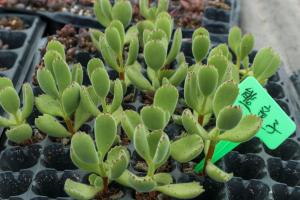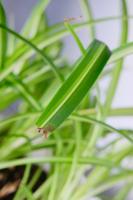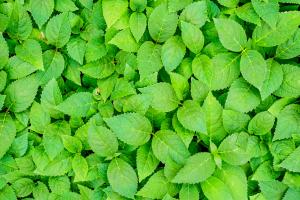Gardenia
Reason:
In summer, gardenia is most likely to be wilted due to lack of water. If you turn a blind eye to the symptoms of dry and wilting leaves, it may lose its life in a few days

1. All the leaves of Gardenia have been lost, so the withered leaves and branches can be omitted here for the time being
If the leaves don't fall off, just cut off the withered, yellow and black leaves

2. Prepare perlite, peat soil, carbendazim, rooting powder, etc. the situation of this strain is relatively serious, so be fully prepared
Because perlite itself is acidic and has good air permeability, Huahua suggests that you can put more

3. Take the Gardenia out of the pot and check the root system. It is normal for the Gardenia root system to appear white and yellow. If it is black and gray, cut it off without hesitation

4. Soak and disinfect the wound of Gardenia in carbendazim solution. If the root system of Gardenia shows signs of decay, it is best not to use the original soil, otherwise it is easy to rot again. Just use new soil directly

5. Dry the wound of Gardenia in the shade, and then apply some rooting powder to promote rooting

6. Peat soil and perlite are prepared in the ratio of 1:1, and then gardenia is put into the basin and poured with water
Note that peat soil can be replaced by coconut brick and perlite can be replaced by coarse sand, but the one with larger particles should be selected

7. Put it in a cool and ventilated place for maintenance, and water it dry and wet

Jasmine
Reason:
Now, the wilting of the branches and leaves of jasmine is probably due to the lack of water and too strong light
Of course, if your jasmine is placed in the shade, but it is still watered frequently, it is better to flood the roots

the following measures shall be taken for water shortage or too strong light:
1. If it is jasmine that has been exposed to the sun for a long time, you need to cut off all the drooping branches on the top first. Yes, including the dry branches, you should also cut off together

2. Then water the jasmine, put it in a cool place for a day, and then put it outside in the sun

3. Note that when you let Jasmine bask in the sun, you must keep up with the watering, at least once a day! Some areas with particularly dry and high temperature even need water three times a day

the following measures shall be taken for waterlogging roots due to heavy water:
1. Cut off all the drooping branches and leaves on the top of jasmine

2. Remove the jasmine from the pot and cut off all the blackened places of the root system

3. Prepare a lot of bactericidal drugs such as bactericide and chlorothalonil, and soak the root wound of jasmine for about half an hour

4. Choose clean nutrient soil, pay attention to disinfection and sterilization. You can bask in the sun before use
5. Put the jasmine in the basin again, pour it into the water, and then put it in a cool place for 2 ~ 3 days, and then maintain it normally

Rhododendron
Reason:
Cuckoos like wet places, but they also like cool places. In summer, many people can't grasp the frequency of watering. They pour more water accidentally, but they don't realize it
When the cuckoo begins to wither and listless, the time left for you to rescue is actually running out

1. First cut off all the withered branches on the surface, leaving only a few good ones. However, if the root also shows signs of decay, all branches and leaves can be cut off to reduce the burden on the root

2. Then take the cuckoo out of the basin, wash the roots, cut off the blackened roots and scrape away the rotten places. Only white roots are left. The following figure shows normal roots. Not all of them are cut off

3. Disinfect all wounds in carbendazim. Note that disinfection is particularly important. After all, it's summer

4. Replace the soil with loose and breathable humus soil. Put a plastic bag on the top to keep moisture. Of course, if you are in a place with high humidity, the plastic bag can be saved

5. Put it in a cool and ventilated place, keep the soil moist, and then wait at ease. Basically, it can come back to life in about a month and a half< span>


 how many times do yo...
how many times do yo... how many planted tre...
how many planted tre... how many pine trees ...
how many pine trees ... how many pecan trees...
how many pecan trees... how many plants comp...
how many plants comp... how many plants can ...
how many plants can ... how many plants and ...
how many plants and ... how many pepper plan...
how many pepper plan...































